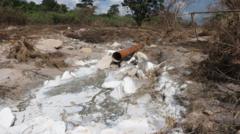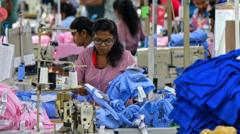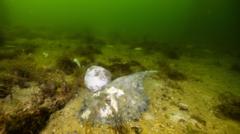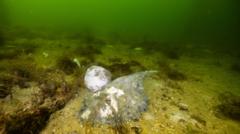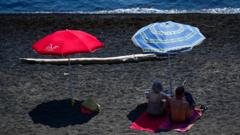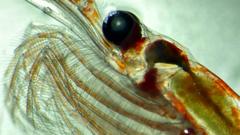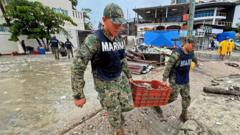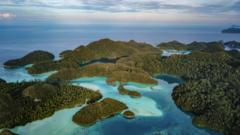In the wake of the X-Press Pearl disaster, Sri Lanka continues to struggle with the consequence of plastic pollution, as local volunteers uncover toxic nurdles scattered along the beaches, and scientists warn of ongoing environmental hazards affecting marine life and local fisheries.
Toxic Legacy of X-Press Pearl Disaster Persists in Sri Lanka
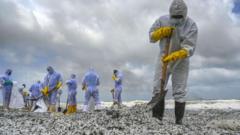
Toxic Legacy of X-Press Pearl Disaster Persists in Sri Lanka
Nearly four years after the environmental calamity, the ongoing impact of the X-Press Pearl cargo ship disaster reveals alarming insights into long-term damages.
Four years have passed since the infamous cargo ship X-Press Pearl caused the largest plastic spill on record off the coast of Sri Lanka, yet beaches are still littered with toxic plastic pellets, known as nurdles. Volunteers tirelessly work to clean up kilograms of these microscopic granules, remnants of the devastating incident that polluted the waters with hazardous chemicals such as engine fuel, acid, and metals. The immediate effects of the spill were stark, with local wildlife suffering—dead turtles, dolphins, and fish washed ashore.
However, experts now express concern that the environmental ramifications could extend far beyond what was initially recognized. David Megson from Manchester Metropolitan University states, “They seem to be accumulating pollution from the ocean, like a big chemical sponge." Nurdles, vital raw materials for plastic production, have become increasingly challenging to locate as they bury themselves deeper into the sands.
The disaster triggered when the X-Press Pearl began leaking nitric acid shortly after leaving Dubai in May 2021 resulted in a fire that ultimately led to the ship sinking about nine nautical miles off the southwestern coast of Sri Lanka. Local environmentalist Muditha Katuwawala described the aftermath as resembling a war zone, revealing a disturbing picture of injured marine life and burgeoning nurdle populations.
Despite initial clean-up efforts yielding hundreds of kilos daily, the task has slackened due to diminishing quantities of nurdles and rising difficulty in locating them. Researchers raised alarms over the potential for these plastic pellets not only to harm wildlife but also to become increasingly toxic by absorbing additional pollutants.
Chemicals identified in forensic studies of local fish correlate with those found in the ship's cargo, suggesting a potential environmental crisis that local fishermen have reported, citing a severe decline in fish populations post-disaster.
Although X-Press Feeders Ltd claims to have invested over $130 million in cleanup and response efforts, Sri Lankan authorities argue that this is insufficient for the extensive long-term damage. Recently, a ruling by Sri Lanka’s Supreme Court ordered the company to pay a billion dollars to address economic and environmental fallout, but this amount is still limited by existing legal constraints.
As local fisheries suffer, many fishermen, including Jude Sulanta, are compelled to abandon their trade, leading to a poignant reflection on the dire impact of the disaster on their livelihoods. "Many are selling their boats and trying to go abroad," he expressed, highlighting a broader desperation among affected communities. Environmental economist Prof. Prashanthi Guneeardena estimates the total disaster cost could exceed $6 billion when considering wildlife losses and community health impacts.
With the sea's resources under threat and justice seemingly delayed, local fishermen's hopes for recovery are dwindling, shining a light on the lasting impact of environmental negligence.

